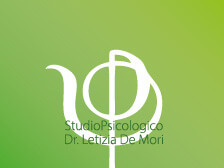BULLYING
Very often when we talk about bullying, both sides of this non-functional relationship are not taken into consideration: the bully (characterized by systematic bullying actions carried out) and the victim (considered an easy target, a weak one) .
Bullying can be of two types: direct, with physical, verbal, explicit attacks on the victim; indirectly, to harm relationships, to cause isolation, through gossip and slander, this also through the use of the internet, thus turning into cyberbullying (attacking the victim's network identity).
For the joke to no longer be considered as such, to be considered bullying it must persist over time, there must be no balance of power between those who perform actions and those who suffer them, and above all there must be no possibility of defense by the victim.
A further difference is found within the gender groups, that is, males tend to carry out direct actions by hitting males and females, while females carry out indirect actions by hitting females of the same age.
A famous survey carried out by Telephone Azzurro in 2014 he helped bring to light data that up to that moment were not fully known:
• the school seemed to be the place where the phenomenon was most developed;
• the reactions of the victims were different, but the most significant data refers to the fact that 22.7% said nothing and kept the secret;
• 48.2 of the interviewees considered the help of adults to be very useful.
It is clear that the families (of the abusers and of the victims) must be warned to inform them of the events, as they are responsible for the minor children, the report must be reported to the School (if the original place of the phenomenon) as regulations avoid such behaviors, must also be reported to the police (Carabinieri and / or Police) as also in this case there are laws to respect.
The role of the Psychologist in these circumstances it is multiple as not only can it give support to the families involved, but it can also provide an important support and contribution within the School by training the teachers, giving them strategies to prevent and manage bullying situations.



















